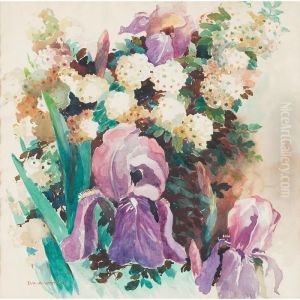Eva Auld Watson Paintings
Eva Auld Watson, also known as Eva Auld Watson-Schütze, was an American photographer and a key figure in the pictorialist photography movement of the late 19th and early 20th centuries. Born in 1889 in Jersey City, New Jersey, Watson-Schütze initially pursued painting before turning her focus to photography. She was a student of Thomas Eakins at the Pennsylvania Academy of the Fine Arts, which reflects the strong artistic foundation that she brought to her photographic work.
In 1902, Watson-Schütze married fellow photographer and academic, Martin Schütze, and they often worked collaboratively. She became a prominent member of the Photo-Secession, a group led by Alfred Stieglitz that aimed to elevate photography as a fine art rather than just a means of mechanical reproduction. Her work was featured in the group's exhibitions and in its publication, Camera Work, where she gained significant recognition.
Watson-Schütze's photography is characterized by its soft focus, use of diffused light, and often allegorical subject matter, which were hallmarks of the pictorialist style. She had a particular talent for portraiture, capturing her subjects with a sense of intimacy and emotional depth. Throughout her career, she operated successful portrait studios in Philadelphia and Chicago.
Despite her active role in the art world of her time, Eva Auld Watson-Schütze's work was somewhat overshadowed by her male contemporaries. However, her contributions to pictorialist photography have been more fully recognized and appreciated in later years. She passed away in 1948, leaving behind a legacy of beautiful, evocative imagery that continues to influence photographers and captivate viewers to this day.
